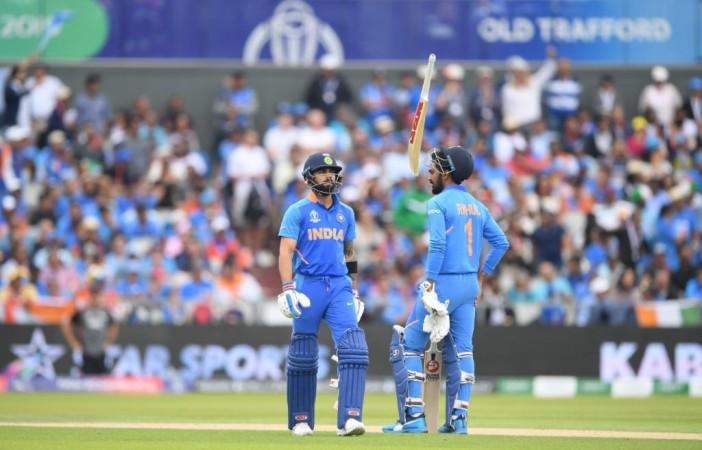
One interesting fact that was widely mentioned on social media after India's loss to New Zealand in ICC World Cup semi-final was that India captain Virat Kohli had single digit scores in all three World Cup semi-finals that he has played. What is even more interesting is the fact that in all three matches, he was dismissed by a left-arm pacer.
In the 2011 World Cup semi against Pakistan at Mohali, it was Wahab Riaz who got a ball to angle across Kohli and get an edge that was taken at gully. In the 2015 last-four match against hosts Australia, Mitchell Johnson bowled a sharp bouncer that the Indian batsman tried to pull and got a top edge which was easily caught. And now, an inswinger from Trent Boult did the trick in the 2019 semi-final.
Ardent cricket fans would remember how, in the 2017 Champions Trophy final, it was another left-arm seamer, Mohammad Amir, who got Kohli out when the latter tried to flick an away going delivery on to the leg-side and got a leading edge which was gleefully accepted at point. On the very previous delivery, the Indian captain had been dropped in slips.

They may also recall that in the 3-match bilateral ODI series that India played against Pakistan in 2012-13, Virat was dismissed in all three matches by Junaid Khan, another Pakistani left-arm pacer.
So, what is it with Kohli and left-arm pacemen? Is there a genuine weakness that the Indian superstar has or is it just a coincidence? To understand this, let's first analyse his three dismissals in the World Cup semis.
Except for 2015, the other two dismissals were due to the ball swinging, away or into the batsman. In the Champions Trophy final also, it was a case of the ball swinging away from Kohli that proved decisive.
In the 2012-13 bilateral series also, Kohli was bowled by a delivery swinging in sharply in the first ODI, had an unlucky dismissal in the second as he nicked a ball down the leg side to the keeper and in the third, the right-hander edged a delivery to slip. So, in two out of three games, it was again the swing, in and out, that did it for Kohli.

So, it's clear that when the ball is swinging, and a decent left-armer is bowling, he has a chance against the best batsman in the world right now. The reason could lie in Kohli's footwork. The man with 41 ODI centuries takes his front foot forward in his initial movement. This, combined with a strong bottom hand makes him predisposed to play the ball on to the leg side, across his pads. Consequently, he is a candidate for leg before wicket when he misses the ball. However, a batsman of his quality doesn't miss the ball often. Hence, he rarely gets out lbw to a delivery coming in from a right-arm bowler.
But this problem becomes more acute when a good left-armer is bowling and getting the ball to move. Due to the natural angle of the ball, Kohli is likely to, instinctively, try and play the ball onto the leg side with a closed face. This is what produced his dismissal in the Champions Trophy final.
The fact is that his initial movement of taking his front foot forward makes it difficult for him to both drive through the line and across it. In the former situation, he is likely to fend at deliveries he could leave alone whereas in the latter, he is in danger of missing a ball heading towards the stump.
This is one weakness of the Indian batting giant that teams will take note of and would probably use in coming days. Considering how prolific he is and how much India is dependent on him, teams may not even shy away from playing a left-armer only to get him out.

















